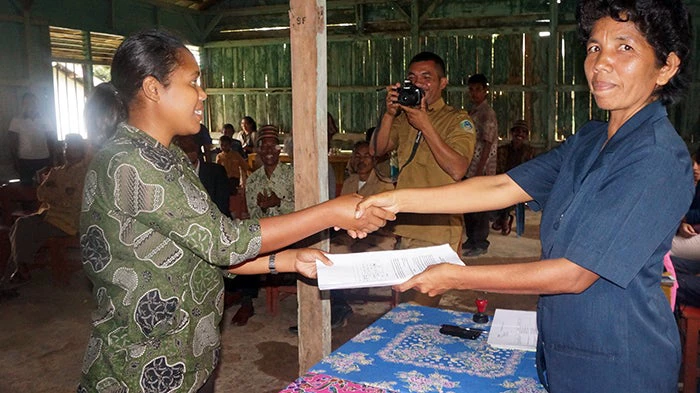
As I sat at the back of the room, observing how the meeting went, I could not help being impressed by the scene.
In a different context, citizens making demands on teachers to provide better services may be a normalcy. But SD Inpres Golo Popa is located in Compang Necak, a very remote village some three hours of grueling drive from the nearest town. In isolated villages like Compang Necak, teachers tend to be very well respected. But precisely because of the remoteness of the areas, supervisions over the teachers by government officials are at a bare minimum, if any. A UNICEF study in 2012 revealed that the lack of supervision resulted in higher teacher absenteeism. An unannounced survey by the Analytical and Capacity Development Partnership in 2014 found that one in five teachers was absent from remote schools, or double the national rate.
At SD Inpres Golo Popa, a World Bank unannounced survey in 2016 found that one in seven teachers was absent from the school. None of the 51 students tested (of 61 registered students) achieved their grade-level competencies in either Indonesian language or mathematics. Such was the disheartening situation before KIAT Guru pilot started.
The pilot is a collaboration between the Ministry of Education and Culture, the National Team for Acceleration of Poverty Reduction and the District Government of Manggarai Timur. Implemented by Yayasan BaKTI, with technical support from the World Bank and funding from the Government of Australia, the pilot aims to improve teacher presence and service performance.
KIAT Guru empowers communities to hold teachers accountable by agreeing to prioritize five to eight bottom-up service indicators to improve student learning environment. In some pilot schools, the community empowerment is combined with pay for performance as part of a teacher’s income, based either on the Education User Committee’s verification of teacher’s presence, or the Committee’s score on teacher’s service performance. Comprised of nine members – six parents of students and three community leaders – the Education User Committee members are elected by the parents and community members. The Committee in Golo Popa comprise of five women.
In SD Inpres Golo Popa, the teacher service performance scores evaluated by the Committee determined the amount of remote area allowance that teachers receive. For example, as the principal received a score of 91, she would receive 91 percent of her remote area allowance for the respective month. Since the total amount of the remote area allowance is the same as their base salary, the Education User Committee’s score is a high-stake for teachers.
After Alfiana completed reading the service performance scores for all seven school teachers, the principal and parents were asked to respond. The school principal Ester Esem questioned her score. She had carried out her job well by supervising teaching and learning activities and teacher presence every day.
Confidently, Alfiana responded that the Education User Committee had checked the document, conducted observations, and interviewed students before scoring. The Committee found that Ester’s supervision was not optimal. In the teacher presence form, two teachers marked themselves as being present, although they were supervising tests at other schools that day.
When I asked the Committee members during lunch break on how they could be so brave, they said it was the responsibility of their heart. They had to be fair to teachers, but also be accountable to the wider community. In a separate talk, Ester, the school principal, confided that the Education User Committee had done a good job in holding teachers accountable. As a female principal, she said, male teachers would not listen to her. But now she has all the Committee members conducting the monitoring on her behalf.




Join the Conversation